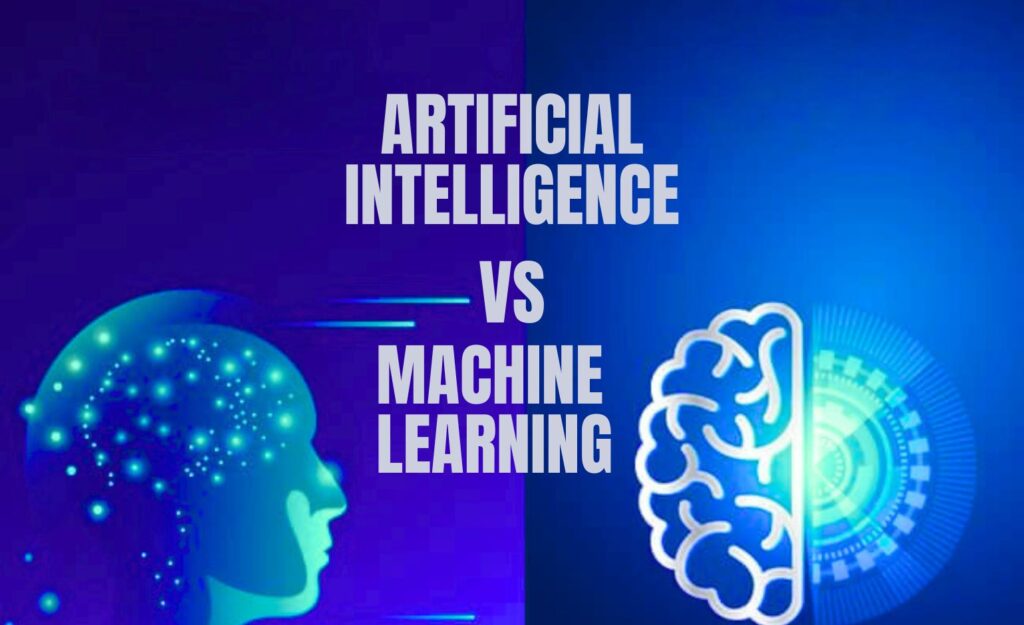AI and machine learning are the hot topics of this decade, and rightly so. You run a business or you do a job, one thing you must be experiencing, people talking about AI and machine learning. How to use them to scale your skills or business.
However, people mix both of these topics, which are actually quite different and have different uses.
Many people feel lost when it comes to these terms. But here is the good news: you do not need to be a tech expert to understand what they mean for your business. In this guide, we will simply break down AI vs machine learning, clear the confusion, and help you decide which one fits your business in 2025.
What is AI?
AI means when computers are trained to think, decide, and act like humans. But it does not mean scary robots or science fiction stuff. It means smart computer programs that can do tasks without needing humans every time.
When you chat with an online assistant, that is AI. When your phone suggests replies to a message, that is AI too. It can also drive cars, help doctors, and even translate languages.
Different companies have different AI assistants. One such example is Siri (an AI-powered virtual assistant by Apple). We often use it in our iPhones and Mac books.
[Related: If you are also an iPhone user, read this essential guide: how to find passwords on iPhone (Add link to the post “How to Easily Find Saved Passwords on Your iPhone (Step-by-Step Guide”)]
But AI is not just one thing. It is a broad field. It covers many smart technologies that work together to solve problems. Here are some of its common parts:
Robotics: This is where machines or robots do tasks like lifting, moving, or even cleaning. It involves little or no human help.
Generative AI: This part of AI creates things like pictures, videos, or even written text — just like a human can.
Natural Language Processing (NLP): NLP helps computers understand and reply to human language, like chatbots or voice assistants.
Deep Learning: This is when AI uses brain-like systems to learn from huge amounts of data and make smart decisions.
Machine Learning (ML): ML is a part of AI where computers learn from data and improve over time — without needing to be told everything.
What is Machine Learning?
Machine learning is a part of AI. It helps computers learn from data and improve over time. The computer does not need someone to tell it every step. Instead, it studies information, finds patterns, and makes smart choices by itself.
For example, if you show a computer thousands of pictures of cats and dogs, it starts to tell the difference between them. The more data it gets, the better it becomes.
Many people get confused between machine learning vs AI, but here is the easy way to remember. AI is the big idea, and machine learning is one smart way to make that idea work.
In our daily life, we use machine learning more than we realize. Here are some simple examples:
- When YouTube suggests videos you might like
- When your phone predicts the next word while typing
- When shopping apps show products based on your taste
- When spam emails go to the junk folder
- When ride apps like Uber guess the best route
AI vs Machine Learning: The Real Difference
Many people mix these two terms. But they are not the same. Understanding the difference between AI and machine learning can help you decide what your business needs.
AI, or Artificial Intelligence, is the big picture. It is all about making computers smart enough to solve problems and make decisions, just like we humans do. AI is found in robots, chatbots, self-driving cars, and even smart tools that help doctors.
Machine learning (ML) is a smaller part under AI. It is the way computers learn from data. ML does not need someone to explain every detail. It studies past information and improves itself with time.
Here is an easy way to understand the difference between AI and ML. Think of AI as a toolbox, and ML is just one of the powerful tools inside it.
Goals:
- AI wants machines to act smart in general.
- ML focuses on teaching machines to learn from data.
Working Style:
- AI may follow set rules or learn by itself.
- ML mostly learns through examples and improves with time.
Uses:
- AI is used in areas like robotics, language translation, and smart assistants.
- ML is used in apps like Netflix recommendations, spam filters, and fraud detection.
AI vs ML Comparison Table
| Feature | AI | Machine Learning (ML) |
| Full Form | Artificial Intelligence | Machine Learning |
| Type | Broad field | Subfield of AI |
| Main Goal | Make computers act smart | Help computers learn from data |
| Learning Style | Can follow rules or learn itself | Learns from examples and data |
| Examples | Chatbots, self-driving cars, robots | Product suggestions, spam filters |
AI and ML in Business: Which One Do You Need?
Every business today is trying to work smarter. That is where AI and ML come in. But before you jump in, it is important to know which one fits your needs.
If your business needs a system that can handle tasks like answering customer queries, understanding speech, or making smart decisions, AI is the right option. AI helps in creating chatbots, smart assistants, or even systems that can spot risks.
But if your business depends on data, for example, finding patterns in sales, guessing customer needs, or stopping fraud, machine learning is what you need. ML studies your business data and keeps getting better at making predictions.
Many companies actually use both. But understanding the difference helps you decide where to start. The real choice between AI vs machine learning depends on your goals, budget, and the kind of work you do.
Examples of AI and ML in Business
- Chatbots that answer customers 24/7 (AI)
- Email apps that block spam (ML)
- Apps that suggest products based on your shopping habits (ML)
- Tools that understand and translate languages (AI)
- Systems that warn about fraud in banking (ML)
- Robots that pack products in factories (AI)
Real-World Uses of AI and ML in 2025

The use of AI vs machine learning is now common in daily life and business. These tools are no longer limited to tech experts. From hospitals to banks and even small stores, AI and ML are making tasks faster and smarter.
Many industries have started using them to save time. AI does the job fast that reduces human errors and grows their business. Let us look at some real examples of how AI and ML are changing different industries.
1. Healthcare
AI and ML are helping doctors and hospitals like never before. They are used to scan medical reports, check X-rays, and even spot diseases early. ML systems can learn from health records and suggest the best treatments. AI chatbots are also being used to answer patient questions quickly. This saves time for doctors and improves care.
2. Banking
Banks use AI to make banking safer and faster. AI tools can spot fraud by tracking unusual transactions. ML studies customer data to detect risks and send alerts. Many banks also use AI-powered chatbots to answer common questions. This reduces waiting time for customers.
3. Marketing
Companies use AI and ML to show better ads to the right people. ML systems learn what customers like by studying their online activity. AI helps businesses send personalized offers and product suggestions. This increases sales and makes shopping easy for customers.
4. Retail and Shopping
Online and offline stores are using AI to improve customer service. ML helps them predict which products will sell more. AI chatbots guide customers while shopping. Some stores even use AI to manage stock, avoiding shortages or extra items.
Getting Your Business Ready for AI and Machine Learning
Before using AI and ML solutions, every business needs to prepare. These tools can save time and money, but only if you set things up properly. You do not need to be a tech expert, but knowing the basics helps avoid mistakes.
Here are some important things your business should focus on before starting with AI vs machine learning:
- Clear Business Goals: First, you need to be clear about why you want AI or ML. Is it to save time? Improve customer service? Reduce errors? Without clear goals, it is easy to waste money on the wrong tools.
- Right Data Collection: AI and ML work best with good data. Your business should start collecting clean, organized information. This includes customer details, sales records, or other useful data. The better your data, the smarter your AI system will be.
- Skilled Team or Experts: AI and ML may sound complex, but you do not always need big teams. Small businesses can hire experts or use ready-made AI tools. It is important to have someone who understands how these tools work.
- Budget Planning: Using AI and ML is an investment. Some tools are free, but bigger projects need proper funds. Your business should plan a realistic budget, so there are no surprises later.
- Testing and Patience: AI and ML take time to show results. Businesses should test tools in small steps. Start with simple tasks, check results, and then expand. Rushing can lead to problems.
AI and ML: Your Smart Business Partners for 2025
AI and ML are no longer future dreams. They are real tools that can help businesses work faster, smarter, and better. Whether you run a small store or a big company, understanding AI vs machine learning gives you the power to choose the right path.
Start small, stay clear about your goals, and let these smart tools handle the hard work while you focus on growing your business.
Frequently Asked Questions
AI makes machines act smart, while machine learning teaches them to improve using data.
Yes, even small businesses can use AI and ML tools to improve customer service, manage tasks, and save time.
It depends on your needs. AI helps with smart tasks like chatbots, while ML is great for learning from data and making predictions.
You need clean, organized business data like customer details, sales reports, or records to train AI and ML tools.






